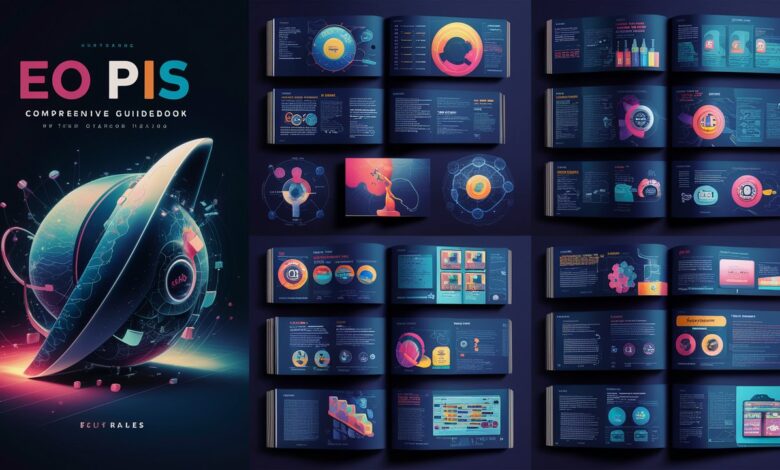EO PIS – The Ultimate Guide to Understanding, Benefits, and Usage

In the rapidly evolving world of digital technology and organizational performance, the term EO PIS has become increasingly popular. Whether you’re a business owner, technology expert, or academic researcher, understanding EO PIS and its multifaceted applications can be transformative. In this comprehensive guide, we explore everything you need to know about EO PIS, its meaning, importance, benefits, and practical uses in today’s world.
What is EO PIS?
EO PIS stands for Enterprise Operations Performance Information System. It is a strategic digital framework designed to monitor, analyze, and enhance the overall efficiency and performance of an organization. Through data-driven insights, EO PIS enables companies to align operational goals with strategic objectives, ensuring optimized performance across all departments.
The core functionality of EO PIS lies in its integration of business intelligence (BI), data analytics, and process automation to streamline decision-making. By offering real-time data and predictive insights, EO PIS empowers management teams to make informed decisions that drive growth and sustainability.
The Importance of EO PIS in Modern Businesses
In today’s competitive market, data accuracy and performance optimization are non-negotiable. EO PIS serves as a bridge between raw data and strategic action, offering organizations a holistic view of their operations.
Here are some key reasons why EO PIS is crucial:
-
Real-Time Monitoring: EO PIS provides a live snapshot of business operations, helping leaders respond quickly to emerging issues.
-
Data Centralization: It consolidates data from multiple departments, ensuring a unified and accurate information flow.
-
Enhanced Decision-Making: With advanced analytics, EO PIS allows for data-driven and evidence-based decisions.
-
Performance Optimization: It identifies inefficiencies and suggests actionable improvements.
By leveraging EO PIS, businesses can boost productivity, minimize risks, and enhance profitability.
Core Components of EO PIS
To fully understand EO PIS, it’s essential to break down its primary components:
1. Data Integration Layer
This layer connects various internal and external data sources, ensuring seamless data transfer. It allows the system to collect information from ERP systems, CRM platforms, financial databases, and IoT devices.
2. Analytics Engine
The analytics engine processes the gathered data, applying AI and machine learning algorithms to uncover hidden patterns and performance trends. This helps organizations predict potential risks and forecast future performance with precision.
3. Visualization Dashboard
A well-designed EO PIS includes intuitive dashboards that display data visually through charts, graphs, and KPIs. These dashboards make it easier for stakeholders to interpret complex information.
4. Reporting and Alerts Module
This feature ensures that key personnel receive automated reports and alerts whenever critical performance thresholds are breached.
5. Security and Compliance
EO PIS platforms are built with strong cybersecurity protocols to safeguard sensitive organizational data and maintain regulatory compliance.
Benefits of Implementing EO PIS
Implementing an EO PIS system offers a multitude of strategic and operational benefits. Below are the most impactful ones:
Improved Operational Efficiency
EO PIS reduces redundancies and streamlines workflows, ensuring that every process contributes to the organization’s strategic objectives.
Enhanced Employee Performance
By tracking individual and departmental KPIs, EO PIS provides actionable insights that can improve employee productivity and engagement.
Strategic Forecasting
With predictive analytics, EO PIS helps organizations anticipate market trends and adapt their strategies proactively.
Increased Transparency
EO PIS promotes transparency across departments by providing a unified data ecosystem accessible to all relevant stakeholders.

Cost Reduction
Through performance optimization and resource management, EO PIS helps organizations reduce operational costs significantly.
How EO PIS Works in Real-Time Operations
The functioning of EO PIS revolves around a continuous feedback loop. Data is collected, analyzed, and transformed into actionable insights. This information is then used to implement operational changes, which are again measured and analyzed for performance improvement.
For instance, a manufacturing company using EO PIS can monitor production rates, identify bottlenecks, and optimize supply chain management in real-time. Similarly, a service-based firm can track client satisfaction levels and adjust its operations for better customer experience.
EO PIS and Digital Transformation
EO PIS plays a pivotal role in digital transformation initiatives. By automating routine processes and integrating AI-driven analytics, EO PIS supports businesses in becoming data-centric organizations.
It enhances collaboration between departments, improves communication, and fosters a culture of continuous improvement. Moreover, EO PIS supports remote accessibility and cloud integration, allowing global teams to access critical data from anywhere at any time.
Best Practices for Successful EO PIS Implementation
Implementing EO PIS effectively requires a well-thought-out strategy. Below are some best practices to ensure success:
-
Define Clear Objectives: Identify the specific performance areas your EO PIS should improve.
-
Choose the Right Platform: Select an EO PIS solution that fits your organizational size, goals, and technical infrastructure.
-
Ensure Data Accuracy: Regularly audit data sources to maintain integrity.
-
Train Employees: Provide training programs to ensure staff members can effectively use EO PIS tools.
-
Monitor and Update: Continuously refine EO PIS based on feedback and evolving business needs.
By following these steps, organizations can unlock the full potential of EO PIS and achieve long-term success.
Future of EO PIS: Trends and Innovations
The future of EO PIS is shaped by artificial intelligence, cloud computing, and advanced data analytics. As organizations increasingly adopt automation, EO PIS will evolve into an even more intelligent system capable of self-optimizing performance without human intervention.
Future EO PIS systems will likely feature:
-
AI-driven Decision Support
-
Integration with IoT and Blockchain
-
Predictive Maintenance and Forecasting
-
Sustainability Analytics for ESG Reporting
These innovations will make EO PIS indispensable in the next generation of business intelligence and operational excellence.
Conclusion
In conclusion, EO PIS represents the future of organizational intelligence and efficiency. It combines data integration, analytics, and automation to provide an all-in-one solution for performance monitoring and improvement. Businesses that invest in EO PIS today are better positioned to thrive in tomorrow’s competitive digital landscape.
By implementing EO PIS strategically, organizations can not only enhance performance but also create a sustainable culture of innovation and continuous improvement.
Frequently Asked Questions (FAQ)
1. What does EO PIS stand for?
EO PIS stands for Enterprise Operations Performance Information System, a digital tool for monitoring and enhancing business performance.
2. How does EO PIS improve efficiency?
It improves efficiency through real-time monitoring, analytics, and process optimization.
3. Is EO PIS suitable for small businesses?
Yes, EO PIS can be tailored to fit businesses of all sizes and industries.
4. What technologies power EO PIS?
EO PIS uses AI, machine learning, and data visualization to provide actionable insights.
5. What is the future of EO PIS?
The future lies in AI automation, IoT integration, and predictive analytics, enabling smarter, data-driven enterprises.



